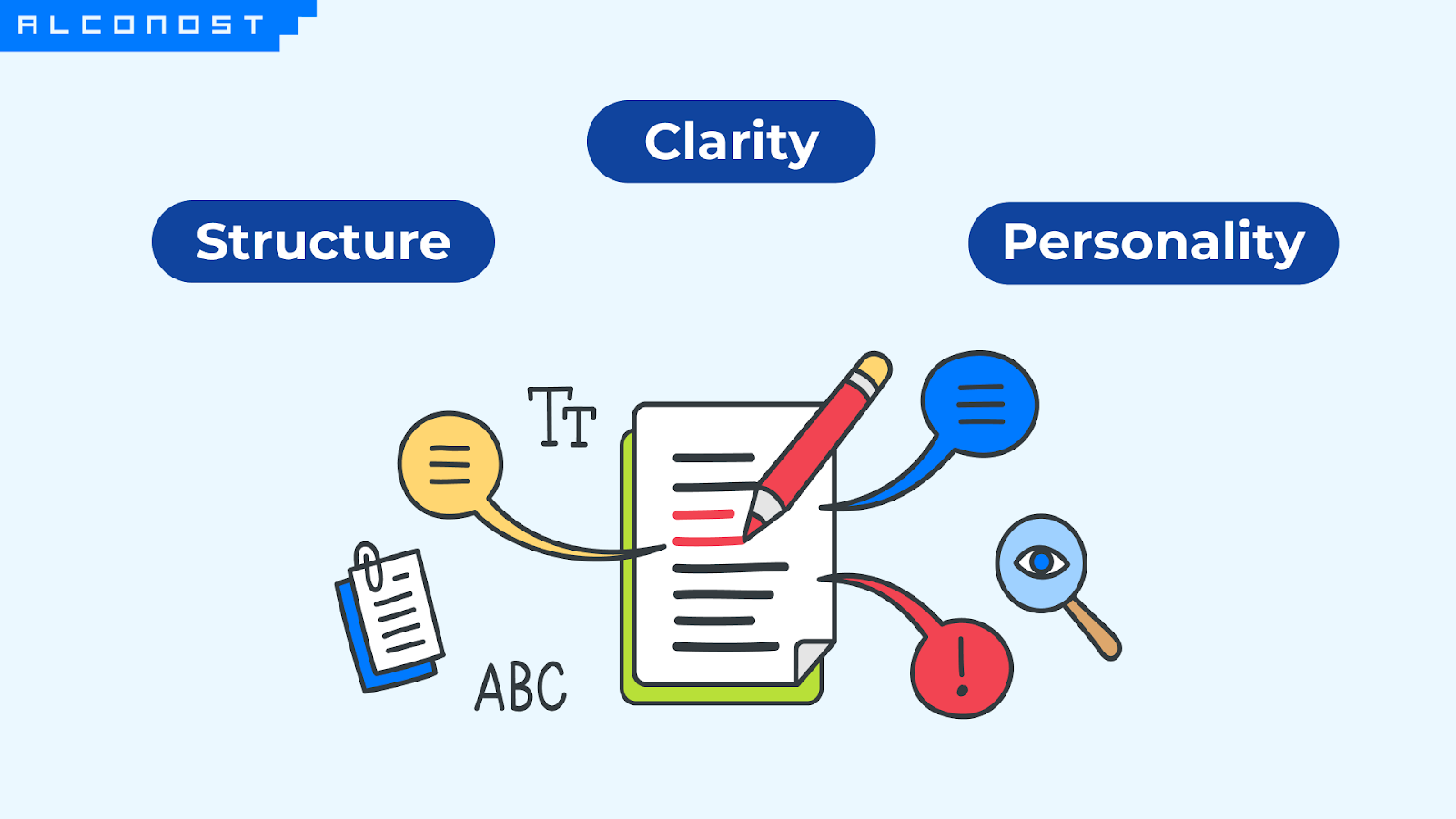Posted by Liza Dziahel
How Localization Project Managers Drive Customer-Centricity at Alconost

How can the culture of your company embrace customer centricity through the process? After giving our two decades of experience running a localization company some thought, we developed our roadmap and what it implies for you, our clients. Continue reading!
How we build a culture of customer care
We've established a culture of ongoing education for all teams engaged in executing localization projects, including project management, vendor management, sales, account, production, development, and marketing, to enable our staff to give exceptional customer care to our clients.
At Alconost, training aims to develop and synchronize individuals' skill sets in three essential areas:
Tools
Planning
Communication
Behind the scenes, let's examine what and how we train.
📧 Skill 1: Communication & Business Correspondence
Our localization PMs start by deciding on effective lines of communication that will expedite project discussions and decision-making for our clients. We remain adaptable: the vendor's localization manager arranges communication in a way that is a) practical for the organization and b) promotes lively project debate. Communication channels will change based on the client's workflows and regulations.
These are our top recommendations for effective client-project team communication:
Crowdin for translation matters (for example, context discussion),
Gmail for formal business matters (for example, invoicing),
Slack for quick queries and urgent issues
Then, we establish the degree of frequency of communication that a client anticipates:
It's standard procedure to provide updates on the intermediate stages of long-term translation projects, such as continuous localization, as it helps show that the project is moving forward! Even a quick email stating that a specific action will be taken shortly (like when completing a quotation, for example) shows attention to detail when there hasn't been a significant update yet.
However, some clients would only want to hear about essential milestones, usually in shorter-term projects. As a result, managers will communicate succinctly and give regular updates on the project's significant advancements.

🧑🎨 Skill 2: Localization Solution Building
We design localization solutions that satisfy a specific project's operational, financial, and schedule constraints.
For that, our localization project managers take the following four actions:
They try to learn as much as possible about the project's objectives, technologies, money, and schedule.
They apply their creative thinking to provide customized localization solutions that address certain business challenges (which might vary depending on the organization and include issues with resources, technical know-how, and other limits).
They discuss the essential ideas of the project and the intricate procedures they are constructing in an easy-to-understand manner.
After that, they manage those procedures.
And what’s included in managing the localization process? Let’s take a look:
They review the texts, your specifications, and any annotations regarding the translation.
They collaborate with you to agree on the budget after calculating the cost of the localization process.
They draft the necessary paperwork, including contracts, bills, certifications, etc.
They carefully choose translators who fit your domain and have the appropriate background.
They guarantee that the completed translations are formatted correctly.
They keep an eye on people meeting the project deadlines.
If proofreading the translations is necessary for your project, they use editors.
They respond to all your inquiries and go above and beyond to ensure you are happy with the procedure and the outcome!
👂 Skill 3: Making big-picture connections
The localization manager, who sees the full picture, will recognize if an organization's needs for international expansion extend beyond localization and provide specific details on how additional solutions might be set up to support the expansion strategy. A few instances are:
For high-stakes projects, localization is frequently accompanied by quality assurance or proofreading. These services come with their policies and costs. Our localization PMs inform you of your options and help you choose the one that best meets your unique translation objectives.
Translation is not the only factor that influences global growth. You will probably have to produce and and distribute multilingual content for audiences from different cultural backgrounds. Do you need help with that? We also provide marketing and multilingual video production services!

Want to grow internationally? Get full-cycle localization into over 120 languages by getting in touch.
Popular articles
How to translate Google Docs professionally and quickly?
Nitro
6 minutes read
Free translation of your app description
Nitro
1 minutes read
Video Localization, Voice Dubbing and Subtitling: Know the Difference
Voice Over
10 minutes read
Latest articles
Choosing Between AI and Human Translation: A Practical Guide
Machine Translation
4 minutes read
Best Translation Project Management Software 2022 - Overview
Apps localization
Nitro
12 minutes read
A Quick App-boosting Lifehack
8 minutes read
Have a project in mind?
We’d like to learn more about it. In return, we’ll get back to you with a solution and a quote.